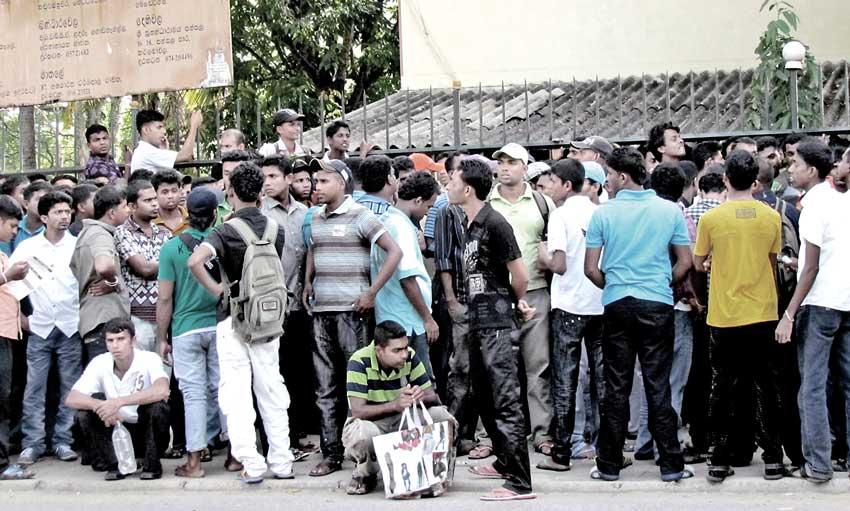06 Jul 2020 - {{hitsCtrl.values.hits}}

Sri Lanka’s unemployment rate rose to 5.7 percent in the first quarter of 2020 from 4.5 percent in the fourth quarter in 2019 and 4.7 percent a year ago as the pandemic-induced business closures limited economic operations from the third week of March appeared to have left some people without jobs.
First quarter unemployment data provides a spectre of what could become worse in April and to a lesser degree in May for the labour market, as many workers attached to travel & hospitality, salons, spas etc. were temporarily laid off in April.
Also, self-employed people in taxi driving to other daily wage earning occupations were unable to find work due to strict social distancing orders by the authorities.
However, people returned to work since the gradual easing of lockdowns since mid-May. But the sectors, which are more susceptible to the decease such as tourism, were lagging behind in re-employing people.
The hotels, resorts and restaurant in June started serving locals patrons with skeletal staff.
Analysts earlier projected a higher single digit unemployment rate for Sri Lanka in 2020 due to the economic fallout from the pandemic. What could aggravate the situation is the return of migrant workers who choose to stay back in Sri Lanka.
Unless the government pivots its industrial policy towards creating higher paying jobs at home and re-skilling the people to equip them with the skills needed to run those industries, Sri Lanka could head in for a deeper economic peril.
The process should also address the lopsided employment distribution mix where 25.3 percent of the labour force is still centered in the agricultural sector, which produces less than 10 percent of the economic output causing significant income disparity.
According to 2019 end data—the latest available— the industry sector employs 27.6 percent of the labour force while the services sector employs 47.1 percent.
Meanwhile, the labour force participation rate in Sri Lanka during the first quarter of 2020 declined to 51 percent from 51.9 percent in the fourth quarter of 2019 and 52.6 percent in the first quarter of 2019.
The labour force participation rate measures the economically active workforce, which consists of everyone who is employed and the ones who are actively seeking employment outside home.
A lower rate is not a good sign as 51 percent suggests that almost half of the working age population are either not working or have given up looking for work due to lack of opportunity.
17 Nov 2024 7 hours ago
17 Nov 2024 9 hours ago
17 Nov 2024 17 Nov 2024
17 Nov 2024 17 Nov 2024
17 Nov 2024 17 Nov 2024